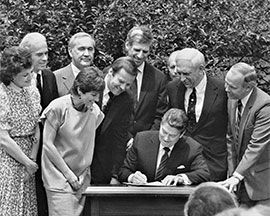Locating A DUI In The State Of Virginia

DUIs in Virginia cover multiple categories of infractions. A DUI can occur when a driver operates a vehicle while under the influence of either drugs or alcohol, and a test results in a blood alcohol concentration or drug content level (BADC) of .08 or higher. Drivers with a Commercial Drivers License face more stringent laws, and can incur a DUI with a BAC of just .04. Minors can also be charged with impaired driving while any alcohol or drugs are detected in a BAC.
A DUI charge in Virginia is a serious offense with harsh consequences. Virginia’s DUI law states it is unlawful for anyone to operate a motor vehicle, engine or train while the have a BAC of .08 or higher, or if they are under the influence of alcohol or drugs to a degree where they cannot safely operate said machinery. In regards to other substances, a person may not operate such machinery while they have a blood concentration of .02 milligrams of cocaine per liter of blood, 0.1 milligrams of methamphetamine per liter of blood, 0.01 milligrams of phencyclidine per liter of blood, or 0.1 milligrams of 3,4-methylenedioxymethamphetamine per liter of blood.
If charged with a DUI, a driver may face penalties that aim to prevent them from driving while intoxicated. Virginia divides DUIs based on the seriousness of the offense, and the penalties also vary.
First-time offense
Any person violating any provision of § 18.2-266 is charged with a Class 1 misdemeanor. They are fined a minimum of $250. If the person's BAC was at least 0.15, but not more than 0.20, they shall be jailed for an additional minimum five day period. If the BAC was more than 0.20, they shall be jailed for an additional mandatory minimum 10 day period.
Second offense (within 5 years)
Any person convicted of a second offense committed within less than five years after a prior offense shall be punished by a minimum fine of $500 and be jailed for between one month and one year. Mandatory minimum sentencing is 20 days.
Second offense (within 10 years)
Any person convicted of a second offense committed after five years but less than 10 years after a prior offense shall be punished by a minimum fine of $500 and be jailed for no less than one month. Mandatory minimum sentencing is 10 days.
Second offense (high BAC)
Any person convicted of a second offense within 10 years of a prior offense who has a BAC of .15 but less than .20, they will be jailed for a mandatory minimum period of 10 days. If their BAC was more than 0.20 the punishment increases to a minimum period of 20 days and a minimum fine of $500.
(Third Offense)
Any person convicted of violating any provision of § 18.2-266 for a third time in a 10 year period is guilty of a Class 6 felony. They face a minimum jail sentence of 90 days. If these three offenses were committed in five years or less, jail time is increased to a minimum six months, and a minimum fine of $1,000. A vehicle owned and operated by the accused during the crime is subject to seizure and forfeiture.
(Offense causing injury or death)
A person whose actions while driving under the influence of alcohol or drugs who causes the injury or death of another person (§ 18.2-36.1, 18.2-36.2, 18.2-51.4, 18.2-51.5)is guilty of a Class 6 felony. The punishment of subsequent violation of § 18.2-266 is a mandatory minimum enjaillement of one year and a minimum fine of $1,000.A vehicle owned and operated by the accused during the crime is subject to seizure and forfeiture.
(Fourth Offense)
The punishment of any person convicted of a fourth or subsequent offense of § 18.2-266 committed within a 10-year period will face a minimum one year imprisonment, and a minimum fine of $1,000. A vehicle owned and operated by the accused during the crime is subject to seizure and forfeiture.
(Driving with a minor)
Any person convicted of a violation of § 18.2-266 while transporting a person 17 years of age or younger shall be fined an additional $500 to $1,000 and sentenced to a minimum five days of confinement.

Certain states can issue DUIs without the car actually moving, and Virginia is one of those states. The statute defines “driving” or “operating,” meaning that if the car is in use in any way (such as using the radio or headlights) the driver may still be culpable for operating a motor vehicle while under the influence.
Note that the Virginia Supreme Court has stated that the person under the influence must be “in actual physical control” of the vehicle. This means in the driver’s seat, with the keys in the ignition.
Virginia has an “implied consent” law. This law requires drivers who are arrested for suspicion of a DUI to submit to a blood or breath test or both. Refusal can result in driver’s license suspension. For the first offense, a driver can lose driving privileges for one year. For the second offense, it’s two years, and for three or more years, its three years.
From 1981 to 1986, under pressure from such advocacy groups as the Mothers Against Drunk Driving, Virginia’s legislature passed legislation to make DUI laws much harsher than they had been for over 70 years. Besides raising the minimum drinking age to 21, the two biggest changes that were enacted were that now DUI offenders would be prosecuted with the intent to convict, and that blood alcohol content (BADC) tests would determine if a driver was intoxicated, rather than the loose definition that had existed up to the point. Even determining a driver’s BADC was difficult initially. The first portable device to see field use was called the “drunkometer” and consisted of a rubber balloon filled with reactive chemicals that would change when coming into contact a drunk driver’s breath. This would finally be replaced by the more standard Breathalyzer in 1954.
